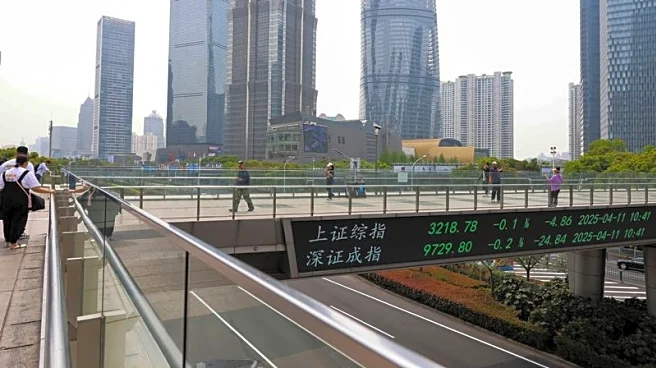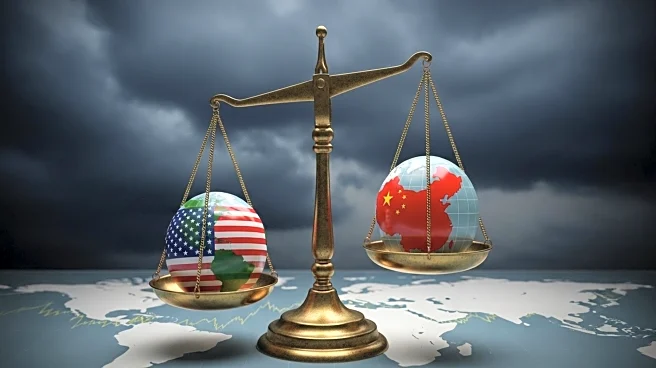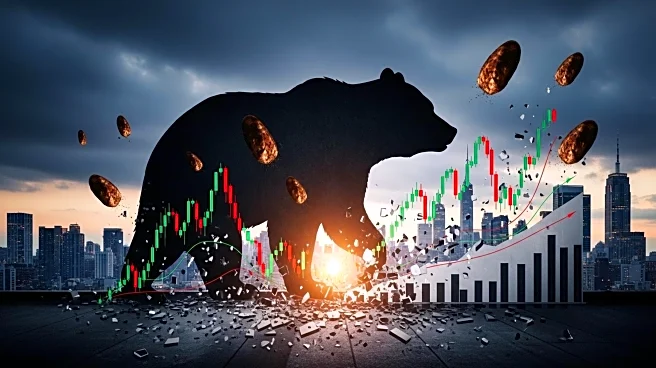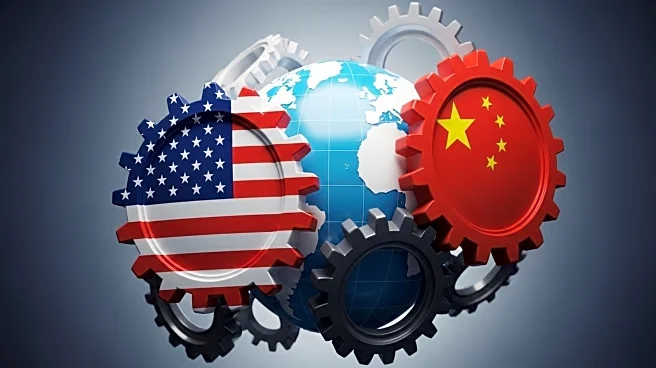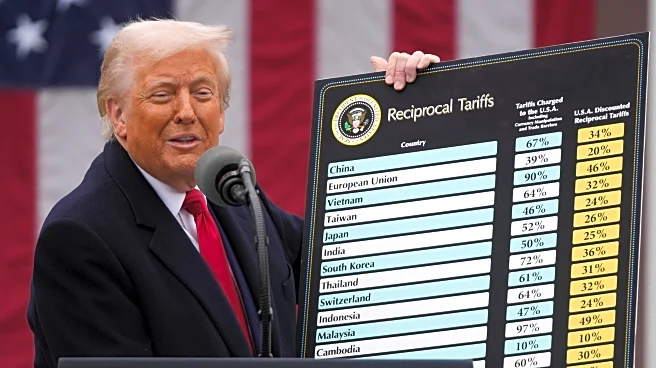What's Happening?
Wall Street experienced a significant recovery on Monday following President Trump's softened stance on trade tensions with China. Futures for major indices, including the Dow Jones Industrial Average, S&P 500, and Nasdaq, showed notable gains before the market opened. This comes after a tumultuous Friday where the S&P 500 saw its worst day since April, dropping 2.7%, while the Dow and Nasdaq also suffered substantial losses. The market's initial reaction was driven by President Trump's threat to increase tariffs on Chinese goods, following China's decision to impose stricter export restrictions on rare earth materials. However, over the weekend, President Trump adopted a more conciliatory tone, expressing a desire to assist rather than harm China, which helped ease investor concerns.
Why It's Important?
The softened rhetoric from President Trump is significant as it impacts the ongoing trade negotiations between the U.S. and China, two of the world's largest economies. The trade tensions have been a major source of market volatility, affecting global supply chains and economic growth. A more moderate approach could lead to improved relations and potentially avert further economic disruptions. The recovery in U.S. markets also reflects investor optimism, particularly in the technology sector, which is heavily reliant on rare earth materials. Companies like Advanced Micro Devices and Micron saw substantial gains, indicating confidence in the sector's resilience despite geopolitical challenges.
What's Next?
The focus will shift to upcoming earnings reports from major U.S. banks, United Airlines, and Johnson & Johnson, which could further influence market sentiment. Additionally, the ongoing U.S. government shutdown remains a critical issue that could impact economic stability. Investors will be closely monitoring any developments in trade negotiations and government actions that could affect market dynamics. The potential for continued dialogue between the U.S. and China may offer opportunities for resolution, but the situation remains fluid, with the possibility of renewed tensions.
Beyond the Headlines
The trade tensions between the U.S. and China highlight broader geopolitical challenges and the complexities of international trade. The reliance on rare earth materials underscores the strategic importance of these resources in global manufacturing. The situation also raises questions about the sustainability of current trade practices and the need for diversification in supply chains. As countries navigate these challenges, there may be long-term shifts in trade policies and economic alliances.


